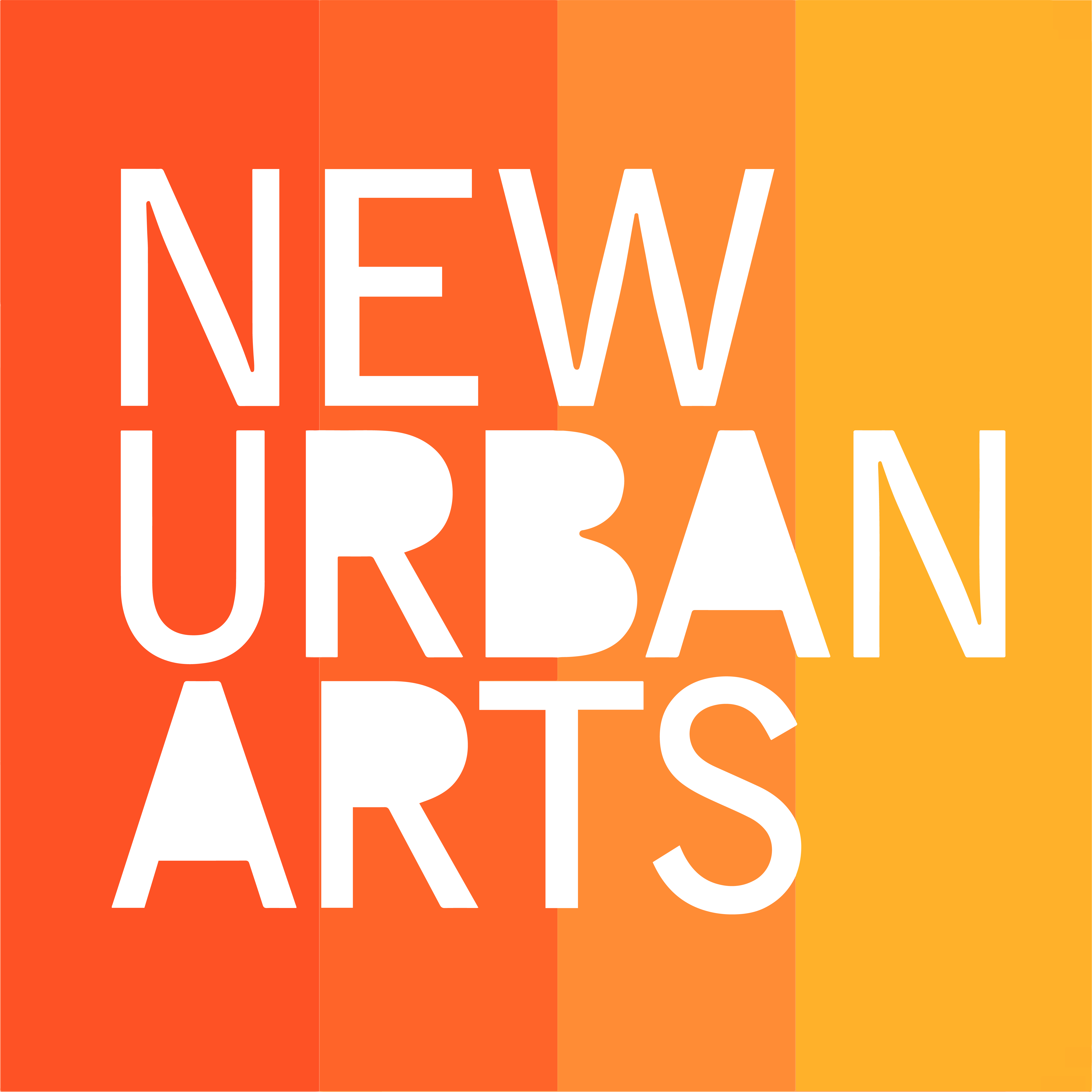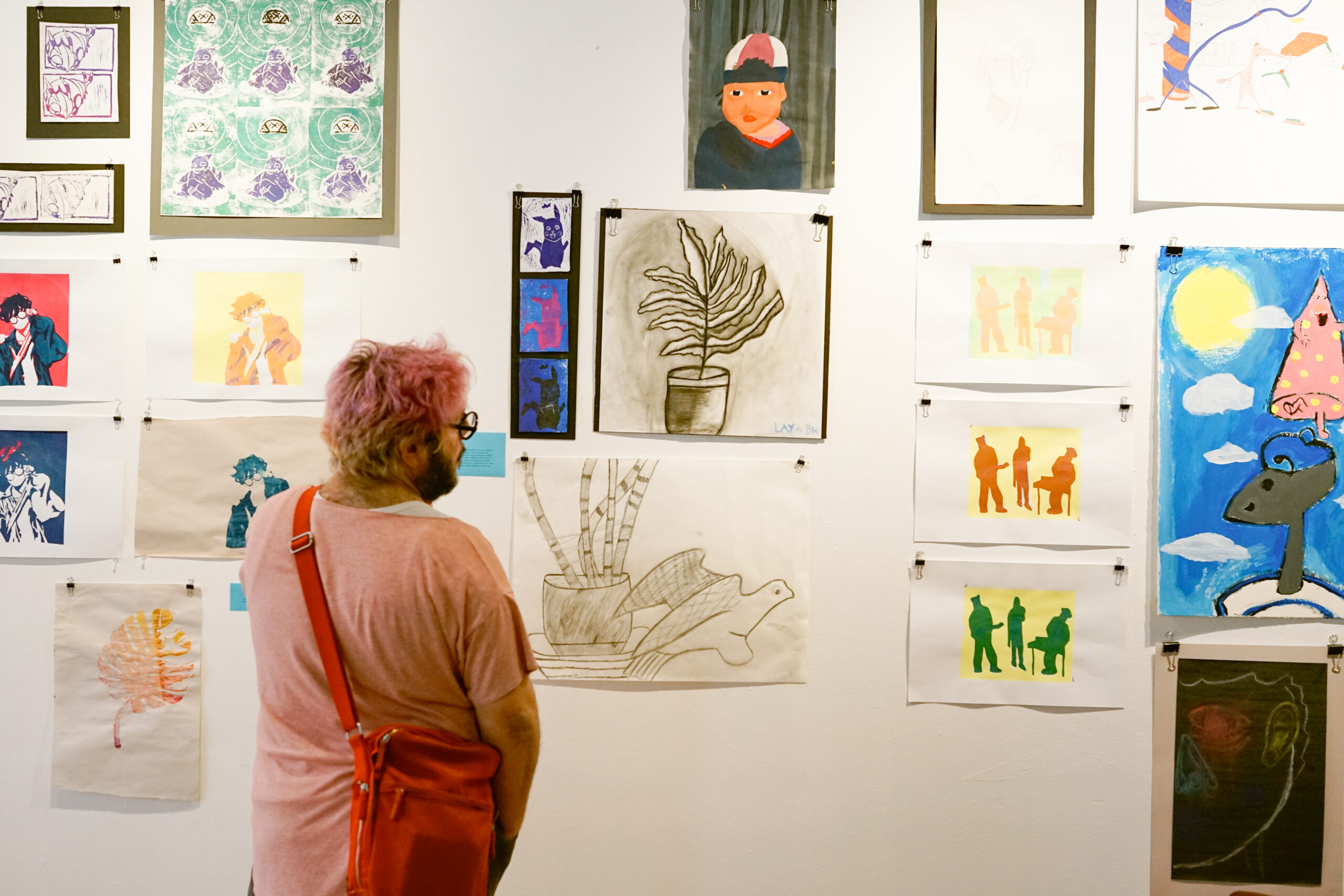Last spring, New Urban Arts launched its newest program, a collaboration with the MET High School. We talked to Sherly Torres, NUA’s Painting and Drawing Resident Artist Mentor and one of the creators of the program, and Alexis Gordon, our new MET Art Academy Artist Mentor to get a sense of how it’s been going.
What is the MET Art Academy?
Sherly: The MET Art Academy it is a semester long internship where MET high school students are welcome into the NUA studio/environment and work on drawing and painting skills in a structured environment. The program started last school year, January 2023 with me and Jori Ketten (former Artist Mentor). I worked with Emily Ustach (former Deputy Director) and Joselina Fay (former Studio Director) to develop the first semester of the program, and Jori and I updated the lesson plan as we went through it.
Alexis: We’re offering a foundational 2D art course with a focus on drawing, painting, and printmaking. The goal is everything from exposing students who have little experience with art-making and helping them develop a studio practice to helping students who are more experienced or have a more solidified idea of how art fits into their life develop their portfolios and have a dedicated practice. The course is taught by the two of us, Ian Cozzens (Printmaking RAM) is helping with screenprinting. Studio Director Jeannie Castillo-Pierre and Kim Reall (the Real World Learning and Pathways Manager at the MET), help us organize everything and I’m so grateful to them for it.
It’s an internship as opposed to an arts course?
Alexis: It’s a little bit of both. MET students are required to have an internship, and we wanted this experience to qualify for that. Their definition is broad, sometimes it looks like learning a trade, cutting lumber on a mill, and sometimes it’s closer to a workshop, like they offer at other youth art programs across Providence.
Sherly: Their efforts will culminate in an exhibition at the NUA studio, so they are required to produce a lot of work. We also have agreements we’ve developed as a community that we are all expected to adhere to, and all of these things were up front as things they should expect — those are the internship requirements, but the main expectation as artists is that they have to try. They have to try new mediums and think about building a portfolio.
How do students get involved?
Alexis: We sent out a description of the class to MET students. 26 applied, and we had group interviews of the students to narrow it down to a group of 14, which is four more than last year. The original description of the program was both as a foundational elements course AND a portfolio development class, so we wanted to merge those two things. NUA has so many resources and the MET isn’t as integrated at NUA as Classical or Central, so it’s also a way to bring MET students into the fold and offer our resources at critical junctures for youth artists.
Sherly: We were looking for a balance of students who had some experience and no experience, and we wanted to see what they were looking for, what goals they had. We especially wanted to save spots for those who had no experience. I think the diverse class better reflects how exposure to the arts can be.
What does a typical day in the program look like?
Sherly: A typical day looks like students coming into the 705 Westminster studio at 9AM, going over our agenda for the day, reflecting on the day before and doing some energy-building activities [Alexis: a game or at least a stretch]. Before we start assignments or activities, we also do a demonstration to introduce a project. Then we have lunches provided and then maybe another demo or project or both. Hopefully there’s space for a reflection on the day or some sort of time together to close out.
What projects are you working on now and what do you have planned?
Alexis: Right now we’re working on still life work, line and shading. From here we want to start incorporating tone and color and eventually paint, and THEN printmaking.
Sherly: Last semester’s internship we noticed printmaking takes a lot more time management and setup. And in the fall there are a lot more school breaks and we want the printmaking sessions to feel continuous, so we scheduled it a little later in the semester. For the spring, we are hoping to extend this cohort’s session into the next semester. We’re waiting on the greenlight for that. But the main thing I look forward to is always the student exhibition. It’s exciting to see them organize their art and get ready for the show and feel proud.
Alexis: Yeah it’s great to see them develop a creative practice and bring their goals to fruition in a place where people can see what they’ve done.
What would you like to see in this program in the future?
Sherly: Cubbies. Vertical painting/paper storage. I think a lot about storage haha. But I’d like to dive into sculpture! I think there’s so much besides 2D painting and drawing. A lot of students come to NUA for music and photography, for example.
Alexis: Yes, I would love to see different offerings and internships. A foundational course, a more deliberate portfolio development course that can also focus on grants/residencies/school applications, etc. A whole dedicated space would be amazing, or something more integrated at the MET. Having in-school programming for schools that aren’t the MET—so many of the art programs in our public schools have been gutted.
Sherly: And I’d like to be able to accomodate travel for students outside of RI, I would love to take them to the ICA in Boston, or maybe Paris haha.

